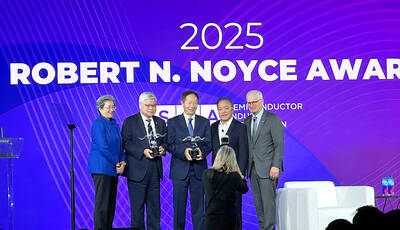US stocks finished the first half of the year with a bang as investors welcomed news that the eurozone is a step closer to solving its 30-month-long debt crisis.
The S&P 500 and the NASDAQ posted their best daily percentage gains since December on Friday after an agreement by European leaders to stabilize the region’s troubled banks, a pact that helped remove some of the uncertainty that has plagued markets.
Under pressure to prevent a catastrophic breakup of their single currency, eurozone leaders agreed on Friday to let their rescue fund inject aid directly into stricken banks starting next year and intervene in bond markets to support troubled member states.
They also pledged to create a single banking supervisor for eurozone banks based around the European Central Bank (ECB) in a landmark first step to ward a European banking union that could help shore up struggling member Spain.
TRADING SURGE
Wall Street’s previous reaction to eurozone bailout packages or other rescue plans had been somewhat muted. Initial gains would quickly disappear by the day’s end as investors realized that there isn’t a quick fix to the region’s problems. On Friday, it was a different story. The three major US stock indices jumped 1.5 to 2 percent shortly after the opening bell on news of the eurozone agreement.
By the close, stocks ended at session highs with the major indices up between 2 percent and 3 percent. The Dow Jones Industrial Average surged 277.83 points, or 2.20 percent, to end at 12,880.09. The Standard & Poor’s 500 Index jumped 33.12 points, or 2.49 percent, to finish at 1,362.16. And the NASDAQ Composite Index shot up 85.56 points, or 3.00 percent, to close at 2,935.05.
For the week, the Dow rose 1.9 percent, the S&P 500 advanced 2 percent and the NASDAQ gained 1.5 percent.
For the month, the Dow added 3.9 percent, the S&P 500 advanced 4 percent and the NASDAQ climbed 3.8 percent.
However, for the second quarter, the Dow dropped 2.5 percent, the S&P 500 slid 3.3 percent and the NASDAQ lost 5.1 percent.
Despite the weak second quarter, the three major US stock indices wrapped up the first half of the year with decent gains: The Dow was up 5.4 percent, the S&P 500 was up 8.3 percent and the NASDAQ was up 12.7 percent.
“The next question is whether the ESM/EFSF [European Stability Mechanism/European Financial Stability Facility] will have enough capital and assuming they don’t, will the ECB chip in by giving it a bank license, thus leveraging its size. That is yet to be determined,” said Peter Boockvar, equity strategist at Miller Tabak & Co in New York.
EXCESSIVE DEBT
“For now, party on and turn that hourglass over as more time has been bought, but only the symptoms are being fought as the underlying disease of excessive debt and lack of growth still remains,” he said.
Any market reaction to further developments next week could be exaggerated by lighter-than-usual volume. Wall Street trading desks may be more sparsely populated because it will be a short week. US stock markets will be closed on Wednesday, the Fourth of July, in observance of Independence Day. That could break any weekly momentum when Wall Street resumes trading on Thursday.

Shiina Ito has had fewer Chinese customers at her Tokyo jewelry shop since Beijing issued a travel warning in the wake of a diplomatic spat, but she said she was not concerned. A souring of Tokyo-Beijing relations this month, following remarks by Japanese Prime Minister Sanae Takaichi about Taiwan, has fueled concerns about the impact on the ritzy boutiques, noodle joints and hotels where holidaymakers spend their cash. However, businesses in Tokyo largely shrugged off any anxiety. “Since there are fewer Chinese customers, it’s become a bit easier for Japanese shoppers to visit, so our sales haven’t really dropped,” Ito

The number of Taiwanese working in the US rose to a record high of 137,000 last year, driven largely by Taiwan Semiconductor Manufacturing Co’s (TSMC, 台積電) rapid overseas expansion, according to government data released yesterday. A total of 666,000 Taiwanese nationals were employed abroad last year, an increase of 45,000 from 2023 and the highest level since the COVID-19 pandemic, data from the Directorate-General of Budget, Accounting and Statistics (DGBAS) showed. Overseas employment had steadily increased between 2009 and 2019, peaking at 739,000, before plunging to 319,000 in 2021 amid US-China trade tensions, global supply chain shifts, reshoring by Taiwanese companies and

Taiwan Semiconductor Manufacturing Co (TSMC) Chairman C.C. Wei (魏哲家) and the company’s former chairman, Mark Liu (劉德音), both received the Robert N. Noyce Award -- the semiconductor industry’s highest honor -- in San Jose, California, on Thursday (local time). Speaking at the award event, Liu, who retired last year, expressed gratitude to his wife, his dissertation advisor at the University of California, Berkeley, his supervisors at AT&T Bell Laboratories -- where he worked on optical fiber communication systems before joining TSMC, TSMC partners, and industry colleagues. Liu said that working alongside TSMC

TECHNOLOGY DAY: The Taiwanese firm is also setting up a joint venture with Alphabet Inc on robots and plans to establish a firm in Japan to produce Model A EVs Manufacturing giant Hon Hai Precision Industry Co (鴻海精密) yesterday announced a collaboration with ChatGPT developer OpenAI to build next-generation artificial intelligence (AI) infrastructure and strengthen its local supply chain in the US to accelerate the deployment of advanced AI systems. Building such an infrastructure in the US is crucial for strengthening local supply chains and supporting the US in maintaining its leading position in the AI domain, Hon Hai said in a statement. Through the collaboration, OpenAI would share its insights into emerging hardware needs in the AI industry with Hon Hai to support the company’s design and development work, as well